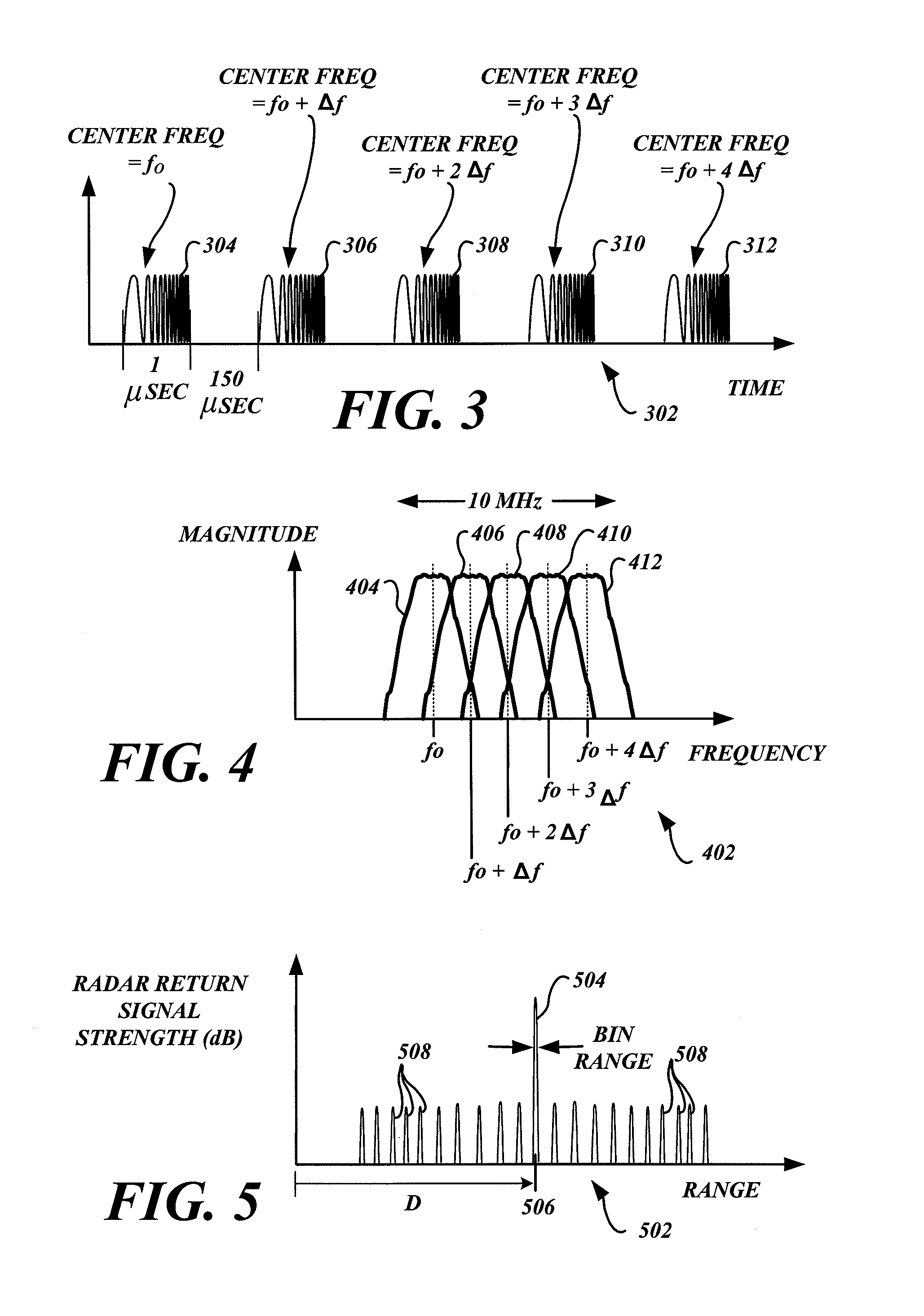Systems and methods for suppressing ambiguous peaks from stepped frequency techniques
a stepped frequency and ambiguous peaks technology, applied in the field of systems and methods for suppressing ambiguous peaks, can solve the problems of cluttered display, increased ambiguous peaks, and increased sensitivity of pulse compression methods, so as to achieve clean and more accurate radar display
- Summary
- Abstract
- Description
- Claims
- Application Information
AI Technical Summary
Benefits of technology
Problems solved by technology
Method used
Image
Examples
Embodiment Construction
[0013]FIG. 1 is a block diagram of an exemplary embodiment of a stepped frequency ambiguous peaks compensation system 100 implemented in an electronics system 102 of an installation (not shown). The electronics system 102 includes a processing system 104, a RF transceiver system 106, a display system 108, and a memory 110. The transceiver system 106 includes a receiver 118 operable to measure radar returns, transmitter 120 that is operable to emit radar signals, and an antenna 122. The display system 108 includes a display 124. It is appreciated that the electronics system 102 may include many other components and / or systems that are not illustrated or described herein.
[0014]The above-described components, in an exemplary embodiment, are communicatively coupled together via communication bus 132. In alternative embodiments of the electronics system 102, the above-described components may be communicatively coupled to each other in a different manner. For example, one or more of the ...
PUM
 Login to View More
Login to View More Abstract
Description
Claims
Application Information
 Login to View More
Login to View More - R&D
- Intellectual Property
- Life Sciences
- Materials
- Tech Scout
- Unparalleled Data Quality
- Higher Quality Content
- 60% Fewer Hallucinations
Browse by: Latest US Patents, China's latest patents, Technical Efficacy Thesaurus, Application Domain, Technology Topic, Popular Technical Reports.
© 2025 PatSnap. All rights reserved.Legal|Privacy policy|Modern Slavery Act Transparency Statement|Sitemap|About US| Contact US: help@patsnap.com



